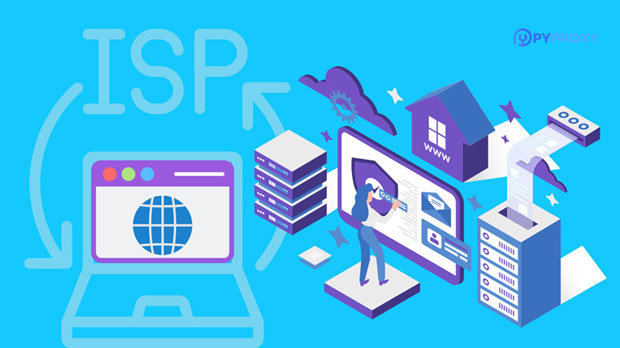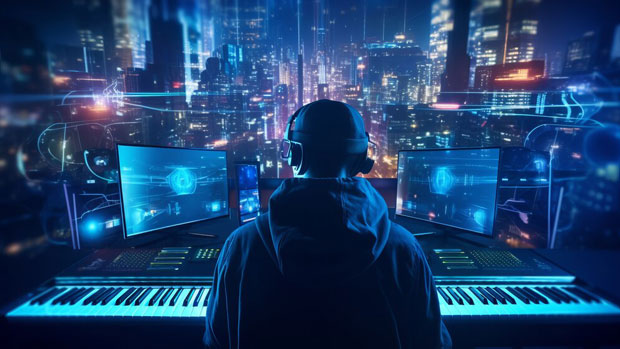In the fast-evolving world of cross-border e-commerce, businesses must adapt to ever-changing market conditions and consumer behavior. PYPROXY residential proxy Service plays a crucial role in this dynamic environment by offering valuable solutions for monitoring competitors, managing pricing strategies, and enhancing security. It allows e-commerce businesses to gather data from different geographical locations without being blocked or detected, enabling them to conduct competitive analysis, track trends, and monitor pricing fluctuations effectively. This article explores the various applications of the Py proxy residential Proxy Service in cross-border e-commerce monitoring, shedding light on how it helps businesses stay ahead of the competition. What is PyProxy Residential Proxy Service?PyProxy Residential Proxy Service provides users with access to a large pool of IP addresses from real residential devices across the globe. Unlike data center proxies, which can be easily detected, residential proxies are associated with legitimate household IP addresses, making them less likely to be flagged by websites. This ensures a higher success rate when scraping data or performing other online monitoring tasks. PyProxy, specifically, offers a seamless service for cross-border e-commerce businesses that need to perform tasks like competitor analysis, market research, or tracking price trends in various regions.Enhancing Competitor MonitoringCompetitor monitoring is vital in cross-border e-commerce, where the market landscape changes rapidly. To maintain a competitive edge, businesses need real-time access to competitor pricing, inventory levels, promotional strategies, and other market activities. PyProxy Residential Proxy Service enables companies to collect this data without revealing their identity or facing access restrictions. By using proxies, e-commerce businesses can gather information from different countries or regions without being limited by geographical blocks or anti-scraping measures.This capability is particularly important for global e-commerce platforms that want to monitor competitors in multiple regions simultaneously. By gathering accurate competitor data, companies can make data-driven decisions, such as adjusting their pricing strategies, refining their product offerings, or identifying new trends before they become mainstream.Pricing and Market ResearchIn the competitive world of cross-border e-commerce, pricing plays a critical role in attracting and retaining customers. Companies need to stay up-to-date on market fluctuations, competitor pricing, and consumer demand to ensure they are offering the best value. PyProxy Residential Proxy Service helps businesses collect real-time pricing data from a variety of e-commerce platforms without restrictions. By utilizing residential proxies, e-commerce businesses can monitor how competitors price their products in different regions and adjust their own pricing strategies accordingly. This allows companies to identify pricing gaps or opportunities to offer promotions and discounts. Furthermore, PyProxy's proxies can help businesses keep track of price changes over time, enabling them to identify long-term pricing trends and adjust their strategies accordingly.Additionally, market research becomes much easier with the ability to monitor product availability and market sentiment across different countries. Businesses can track which products are in high demand in specific regions and adjust their inventory accordingly, ensuring they meet customer expectations.Geographical Targeting and Content PersonalizationIn cross-border e-commerce, businesses must cater to diverse consumer bases across different countries. Each region has unique preferences, behaviors, and purchasing patterns, making it crucial for companies to understand and cater to local markets effectively. PyProxy Residential Proxy Service helps businesses understand these nuances by allowing them to access region-specific data and personalize content for different markets.For example, a business can use residential proxies to scrape region-specific data, such as local product reviews, trends, or popular search keywords. This information can then be used to tailor content, promotional offers, and product recommendations to the local audience. By offering personalized experiences, businesses can improve customer engagement, conversion rates, and brand loyalty.Furthermore, using proxies to monitor local websites and competitor activities ensures that companies are aware of any emerging trends or shifts in consumer behavior in various regions, giving them the edge they need to respond quickly and effectively.Monitoring Online Reviews and Brand ReputationIn the age of digital commerce, brand reputation plays a significant role in consumer decision-making. E-commerce businesses need to track online reviews, ratings, and discussions to ensure their brand image remains positive across various markets. PyProxy Residential Proxy Service enables businesses to monitor online forums, review websites, and social media platforms without being blocked by anti-scraping systems.By using proxies to gather feedback from multiple sources and regions, businesses can identify potential issues early on and take corrective actions. Whether it's addressing negative reviews, identifying product issues, or understanding customer sentiment, PyProxy helps businesses stay proactive in maintaining their brand's reputation across different countries.Ensuring Security and Avoiding IP BlocksSecurity is a major concern for e-commerce businesses, particularly when engaging in activities like web scraping, competitive analysis, or price monitoring. Many e-commerce platforms implement anti-bot systems to prevent unauthorized access to their data, leading to IP blocks and captcha challenges. PyProxy Residential Proxy Service mitigates this issue by offering a network of residential IPs that mimic regular user traffic, reducing the chances of being detected and blocked.By rotating through a pool of residential IP addresses, businesses can avoid detection and continue their monitoring tasks without interruption. This ensures that e-commerce businesses can gather critical data without facing obstacles, ultimately enhancing their ability to stay competitive in the fast-paced e-commerce landscape.The PyProxy Residential Proxy Service is an essential tool for businesses engaged in cross-border e-commerce. Its ability to provide access to real, geo-located IP addresses enables companies to perform a variety of critical tasks, such as competitor monitoring, pricing analysis, market research, and brand reputation management, all while maintaining high levels of security and avoiding IP blocks. By leveraging these capabilities, e-commerce businesses can make informed decisions, adapt to changing market dynamics, and ultimately gain a competitive edge in the global marketplace.In the rapidly evolving world of e-commerce, staying ahead of the competition is key, and PyProxy Residential Proxy Service offers a powerful solution to help businesses monitor, analyze, and optimize their operations across multiple regions.
Sep 01, 2025



































































